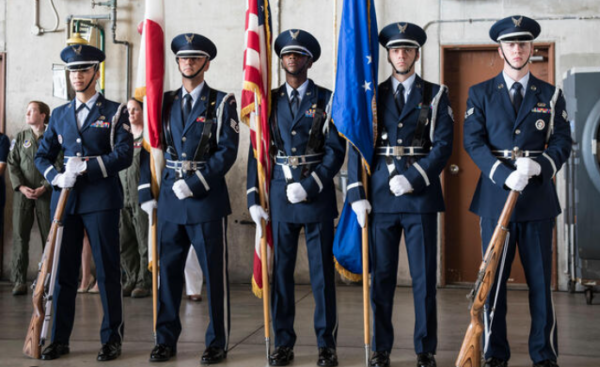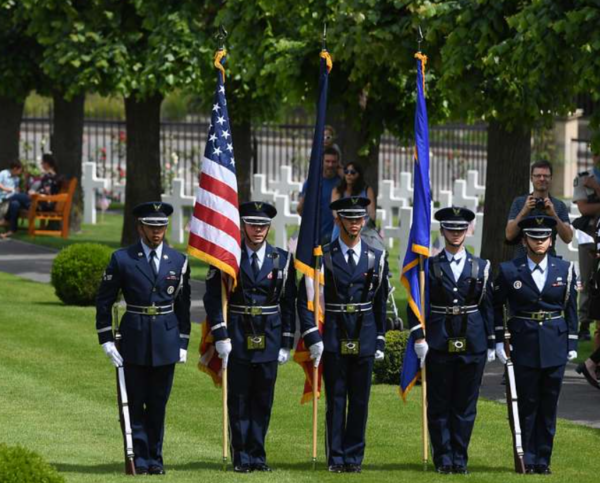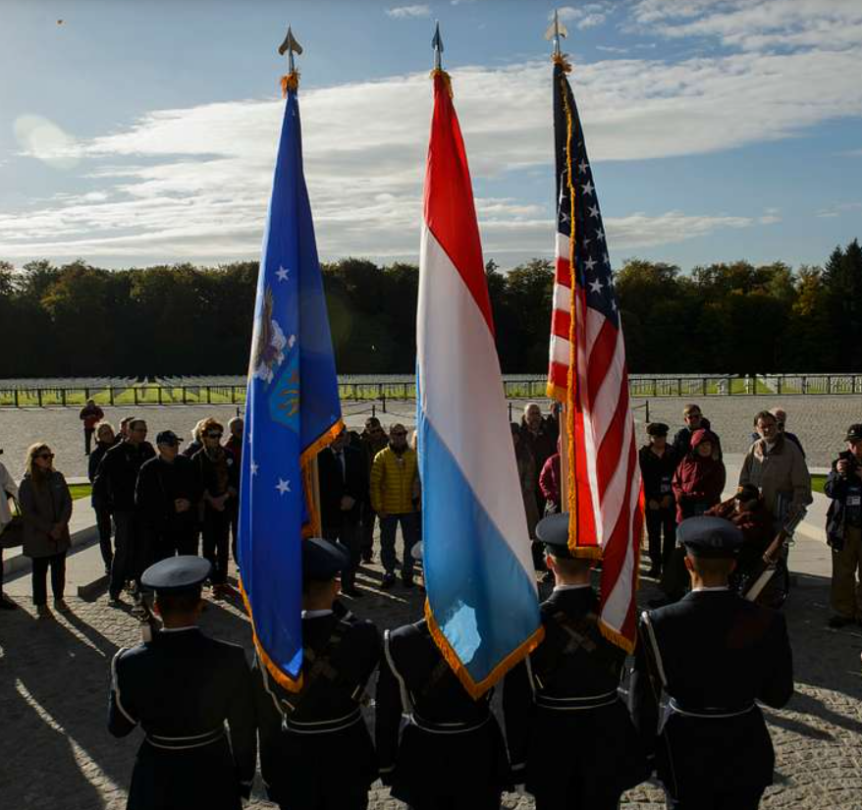This is huge. This changes 95% of color guards overseas as to make up (what flags are carried and when) and also affects some of the stateside teams as well. The protocol behind carrying foreign national flags was just assumed for many years. We can’t just assume anymore.
Installation teams, you MUST have all applicable manuals, regulations, instructions, and pamphlets in your library and you MUST read all of them so that you have the information that you are supposed to know. Many times, leadership changes hands at a Base Honor Guard (for instance) and the incoming leadership is just trained in techniques and procedures with currently known info with thought never given to the wider required knowledge.
Overseas installation honor guards/color guards, get ready to fully support these changes with documentation when the head of Protocol for your base comes and calls you to task for (correctly) not carrying the host nation flag. People don’t like being wrong or told that they are wrong. Just be professional.
One of the frustrations that comes from US military drill and ceremonies is that we have all kinds of guidance broken up into several manuals that never come together in one. Through my research, I’m trying to remedy that.

SECTION 5: CEREMONIAL SUPPORT AND MILITARY SERVICE EXHIBITS
5.1. CEREMONIAL SUPPORT.
a. Color Guard.
(1) A Joint Armed Forces Color Guard will be used at all DoD-authorized public programs where the presentation of colors is in the best interest of DoD. The Joint Armed Forces Color Guard will, when available, use:
(a) Two Army bearers with National and Army Colors.
(b) One bearer each for the Marine Corps, Navy, Air Force, Space Force, and Coast Guard with individual Military Service Colors.
(c) One Army rifleman and one Marine Corps rifleman as escorts.(2) When a Joint Armed Forces Color Guard cannot be formed, a single Service color guard may carry each of the Military Service flags or the senior member of the senior Military Service in the color guard will carry the National Colors in accordance with the Department of the Army Training Circular 3-21.5.
b. National Flag of Foreign Nations and Other Organizational Flags.
(1) U.S. military personnel in a foreign location may carry the official national flag of foreign nations participating in official civil ceremonies sponsored and conducted by the U.S. Government or a State, county, or municipal government.
(a) An official of the foreign nation concerned must be present in an official capacity to receive such honors.
(b) The official must be an individual to whom honors normally are rendered.(2) In all other public programs or ceremonies, Service members in uniform and in an official capacity must not carry flags of foreign nations, veterans’ groups, or other non-military organizations.
DoDI 5410.19-V4, September 29, 2021

What the Above Means to the Military
This includes Active Duty, Reserve, National Guard, all veteran groups*, ROTC, JROTC, Sea Cadets, Sea Scouts, Civil Air Patrol, Young Marines, and any other cadet program.
*Apparently, vet groups don’t understand that the rules still apply to them.
Joint Armed Forces Personnel or Flags Only
Under paragraph a. we read that a joint armed forces color guard has specific membership requirements. Reading further, we see that a single service can carry all service colors if necessary. This means departmental colors only. Do not include command colors.
This gives us all some leeway for parades with a better understanding of requirements.
Carrying a Foreign National Flag
I’ve been asked about guidance for carrying a flag of a foreign nation many times and through my research found the information in paragraph b. What this means is that, in order to be authorized to carry the host nation flag (“host nation” means you are stationed overseas) or a foreign national flag in the USA, the ceremony must be official AND a host nation official must be present and take part in the ceremony. So:
- Merely being invited to a local parade does not qualify to carry that country’s flag even if a local government official is present but not in an official capacity.
- Performing any ceremony on base does not qualify to carry that country’s flag unless a local government official is in attendance in an official capacity and not just attending.
- Most every ceremony held at an American Battle Monuments Commission overseas memorial or cemetery does qualify. You must ensure your team is within standards by checking with the requestor as to who will attend and speak.
- A foreign country is competing in a game (hockey, basketball, etc.) does not qualify to carry that country’s flag. There would not be an “official capacity” at a ball game, just attendance.
Colors may be preposted (setup in a display before the ceremony starts) for a ceremony on base, there’s no problem with that, but the color guard cannot carry the foreign national flag.

The SOFA
No, not the couch you sit on, the Status of Forces Agreement. The US government has a SOFA with almost every country where we have bases. With some we have something similar to a SOFA, but you have to research what that is.
As an example of US bases in Japan, we have US Forces Japan (USFJ) Instructions. These instructions are based on the SOFA that the US has with Japan and governs specifics for Americans under the DoD (including civilians) living in country.
USFJI 36-2804, Display of Flags, gives specific guidance for all US military color guards (including JROTC cadets) that everyone must know. The document does not allow copying text, so here is a screenshot below.

The takeaway from the USFJI (which supersedes the DoDI; what another country wants, it gets), a Japanese national must be in attendance and part of a ceremony (matches the DoDI). When that happens, the Japanese flag is to the right of the American flag, even on base (supersedes the DoDI). The departmental must be carried, by the way. Any other time the color guard forms, only the US and departmental [and any applicable organizational] flags are carried).
What the Above Means to First Responders
You should not carry a US military departmental or organizational flag as you do not represent the the service. Carrying the flag is not a way to “honor” anyone.

